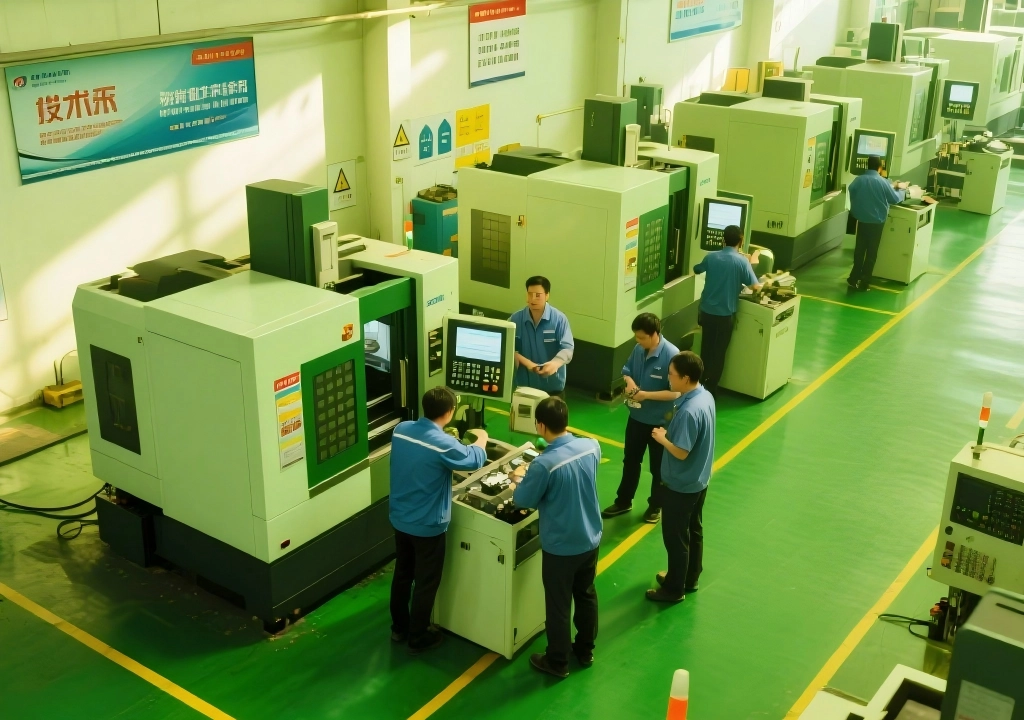On March 11, 2025, the third session of the 14th National People’s Congress passed the resolution on the implementation of the 2024 national economic and social development plan and the 2025 plan, officially approving the 2025 National Economic and Social Development Plan.
Section II of the plan clearly outlines the strategic goal of developing new quality productive forces based on local conditions. Furthermore, it emphasizes accelerating the establishment of a modern industrial system. To achieve this, key initiatives include scaling up industrial internet applications, promoting the digital transformation of manufacturing, as well as fostering emerging industries. Additionally, the plan calls for deepening the integration of advanced manufacturing and modern services.
Computer Numerical Control (CNC) technology uses digital information. It controls the motion and processing of machine tools. This technology plays a core role in manufacturing’s digital transformation. It is also vital for developing advanced manufacturing. Operators employ CNC technology in machine tools. These machines comprise a control system and a PLC. They also include a spindle drive and feed mechanism. Operators program and store parameters in a specific format. These parameters govern tool and workpiece movement. They include feed rate and spindle speed. Direction of rotation is also controlled. Other functions include tool change and coolant control. The CNC system then reads these programs. It decodes and executes the commands. This process produces precise components.
CNC technology and equipment are enabling technologies. They are also fundamental in high-tech industries. These technologies are crucial for strategic emerging industries. They also support cutting-edge manufacturing growth. Modern CNC machine tools are mechatronics quintessential. They are essential in new-generation production technologies. These tools are part of computer-integrated manufacturing systems. CNC machining centers feature tool magazines. They enable automatic tool changes. They perform multiple operations in one setup. The CNC system autonomously controls spindle speed. It also manages feed rate and tool paths. Auxiliary functions are controlled automatically. This enables drilling and countersinking operations. Reaming and boring are also performed. Tapping and milling across surfaces are achievable. These centers greatly enhance precision and efficiency. They minimize manual errors and setup times. Material handling is also reduced. Thus, they deliver strong economic benefits. Based on spindle orientation, there are two types. These are vertical and horizontal machining centers.
Amid the ongoing transformation and upgrading of the manufacturing sector, the growing demand for high precision, high efficiency, and intelligent machining is driving CNC technology beyond traditional boundaries. It is no longer just about improving technical capability, but about responding precisely to diverse customer needs. Innovations in smart production workflows—through advanced CNC systems, sensor integration, and AI algorithms—enable full-process intelligent control from design to production, substantially boosting productivity and product quality.
As customer demands become increasingly personalized, customized production is emerging as a new trend. Manufacturers must enhance their responsiveness by adopting modular designs and flexible production lines to meet specific industry requirements. At the same time, the CNC machining industry is making significant contributions to green manufacturing for sustainable development. Manufacturers are widely adopting eco-friendly machining techniques to address environmental challenges and resource constraints. These methods, which include dry cutting, low-temperature cutting, and minimal or zero cutting fluid use, effectively reduce environmental impact and resource consumption.
CNC technology continues to evolve alongside developments in information technology, microelectronics, automation, and sensing. Its future lies in higher speed, greater precision, multifunctional integration, and enhanced intelligence. A nation’s overall strength, especially in key strategic areas, directly determines the sophistication of its CNC technology. Globally, industries such as information technology, biotechnology, automotive, and electronics rely heavily on CNC systems to enhance manufacturing capabilities, adapt to market shifts, and stay competitive. CNC applications span across automotive, aerospace, shipbuilding, mold making, power generation equipment, metallurgical machinery, and telecommunications equipment.
China’s 14th Five-Year Plan emphasizes upgrading the manufacturing sector by nurturing advanced manufacturing clusters and developing leading and pillar industries. It also advocates for the integrated, clustered, and eco-friendly development of strategic emerging industries, targeting a contribution of over 17% of GDP. Advanced industries like automobiles, semiconductors, and robotics increasingly rely on CNC machine tools for precision component production. As China’s portfolio of advanced manufacturing industries continues to expand, demand in the CNC machining sector is projected to rise steadily.
By 2029, the market size of CNC machining in China is expected to exceed RMB 600 billion.


